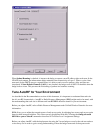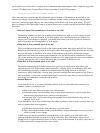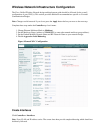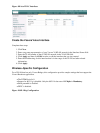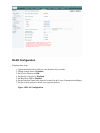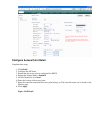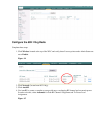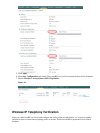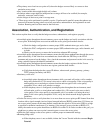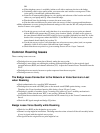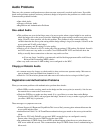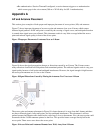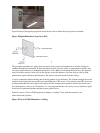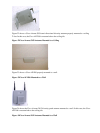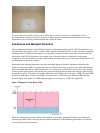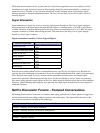The primary area of each access point cell (where the badges are most likely to connect to that
particular access point).
•
Any location where there might be high call volume.•
Locations where usage might be infrequent but coverage still has to be certified (for example,
stairwells, restrooms, and so forth).
•
At the fringes of the access point's coverage area.•
" These tests can be performed in parallel or series. If performed in parallel, ensure that phones are
powered off between testing points to test full association, authentication, and registration at each
location. Roaming and load tests must be the final tests.
•
Association, Authentication, and Registration
This section explains how to verify that the badge associates, authenticates, and registers properly.
At multiple points throughout the environment, power−up the badges and verify association with the
access point. If the badge does not associate with the access point, perform these checks:
Check the badge configuration to ensure proper SSID, authentication type, and so forth.♦
Check the WLC configuration to ensure proper SSID, authentication type, radio channels, and
so forth.
♦
Check your site survey to ensure the location has adequate RF coverage.♦
•
At multiple points throughout the environment, ensure that the phone authenticates through the access
point successfully. If the client does not authenticate, check either the WEP key or the LEAP
username and password on the badges. Also, check the username and password on the AAA server by
using a wireless laptop with identical credentials.
•
At multiple points throughout the environment, ensure that the badges register with the Vocera
Communication Server. If the client does not register, perform these checks:
Verify that the badge has the correct IP address, subnet mask, primary gateway, primary
TFTP, primary/secondary and DNS.
♦
•
Stationary voice calls:
At multiple points throughout the environment, while you stand still, make a call to another
badge and conduct 60 to 120−second voice tests to check voice quality. If the voice quality is
unacceptable, move one badge to a better location and test again. Is the voice quality
acceptable? If not, check your wireless coverage.
♦
If the telephony server is configured, at multiple points throughout the environment, stand
still and make a call to a wired phone and conduct 60 to 120−second voice tests to check
voice quality. If the voice quality is unacceptable, ask if you make a call using the wired
phone. Is the voice quality acceptable? If not, verify the wired network design against the
guidelines.
♦
•
Use the site survey tools to verify that there is no more than one access point per RF channel from that
location with a signal strength (received signal strength indicator [RSSI]) greater than 35. If there are
two access points present on the same channel, ensure that the signal−to−noise ratio (SNR) is as high
as possible to minimize interference. For instance, if the stronger access point has an RSSI of 35,
ideally the weaker access point should have an RSSI of less than 20. In order to achieve this goal, you
might have to reduce one access point's transmit power or move the access point.
•
Check the QoS settings on the access point to confirm proper recommended settings.•
Roaming badge calls:
If the telephony server is not available, initiate the Vocera Tutorial with the command Begin
Tutorial.
♦
•



